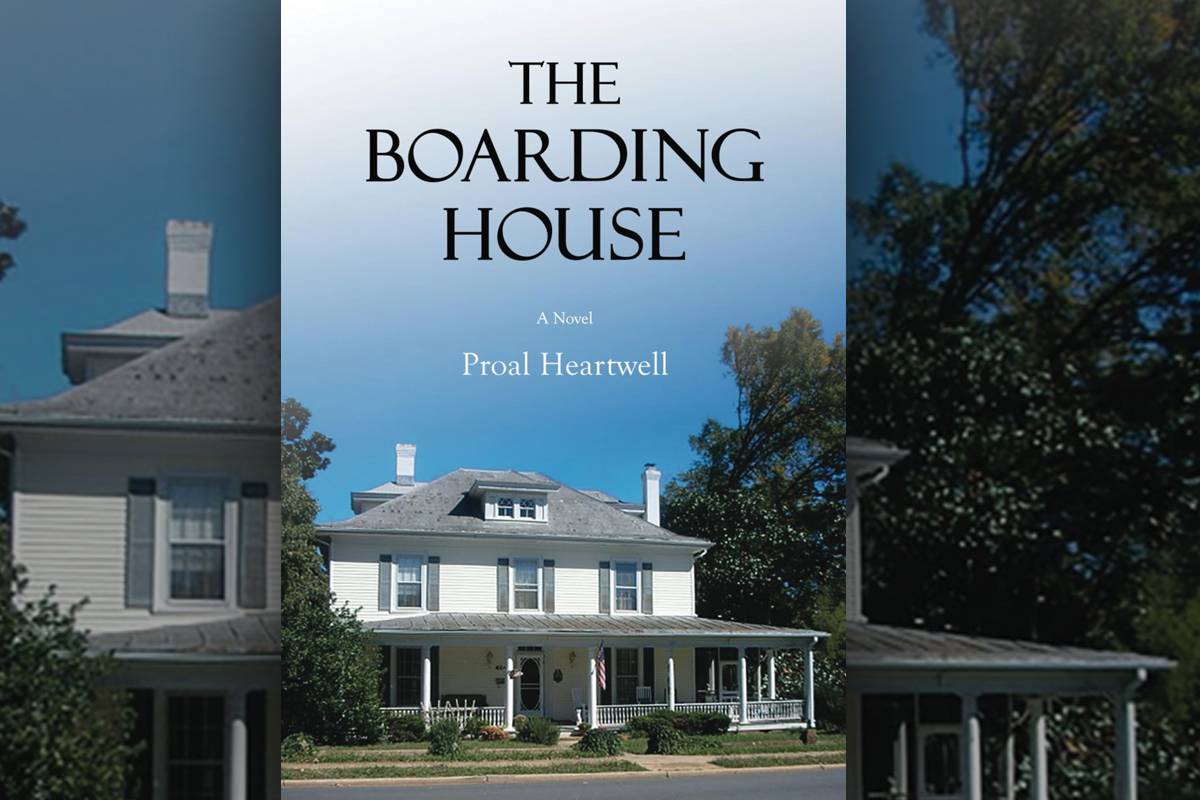In this book, old-time means good time

Over 30 years ago, I read Helen Hooven Santmyer’s “And Ladies of the Club,” a doorstopper of a book chronicling life in a small Ohio town from the post-Civil War era to the early 1930s.
Through her use of detail and her keen eye for manners and customs, Santmyer recreated an era that seemed so very distant from the late twentieth century, and even more so from today’s culture, yet her characters bridged the gap, becoming friends and neighbors as we grew acquainted with them.
Proal Heartwell’s “The Boarding House” (Lightfoot Press, 2024, 438 pages) brought the same pleasant sensations: the delight of an old-fashioned story about ordinary people, the use of detail to recreate a bygone era, and the feeling that the author is serving as an unobtrusive guide through a living museum.
Central to the plot of Heartwell’s novel is the boarding house in the small Virginia town of Lawrenceville. It’s 1927, and a widow, Louvenia Hicks, with help from her 16-year-old daughter Laura, is operating this establishment after the death of her husband and young son Charlie in the Spanish Flu epidemic of 1918-1920. The boarding house’s newest resident is Robert Martin, a native of Richmond and a new graduate of the University of Virginia, who has arrived in Lawrenceville to teach English literature and composition in the town’s high school.
The other boarders — the young budding Methodist minister Willie Elmore, the Northerner Paul Allen, who had long ago made Lawrenceville his home, and Mosby Daniels, who manages a crew at the local railway yard — are also central pieces in this mosaic of small town America a century ago. Daniels acts as a sort of protective godfather to Laura, and is adored by her for that reason, and all the men treat Mrs. Hicks with respect and esteem.
All of these people share their story with readers. We learn, for instance, how the death of Mrs. Hick’s husband and Charlie continue to haunt her and Laura. We follow along as Robert falls in love with a bright college student, Suzanne, the daughter of a well-to-do store owner. Paul Allen’s heart attack, which he survives; Mosby Daniels’ crippling accident at work in the rail-yard; Willie Elmore’s eventual success as a pastor; Laura’s first experience with love: all these make up this tapestry of relationships.
Related Items
Heartwell’s slightly formal prose, quite different from much fiction that appears today, helps recreate this world. Here is a sampling of this style, taken from a scene when Robert brings Suzanne to the boarding house for a Sunday evening dinner:
“It’s fair to say Robert luxuriated in the conversation at the dinner table that night. It was clear that the whole household was fond of Suzanne and when she uttered an unusually prescient or witty remark, Robert could sense the approving eyes of the company glancing his way. Suzanne was indeed a gifted conversationalist, and she made every effort to involve all parties in the ebb and flow of dinner banter.”
For those who relish this sort of high style in their fiction, “The Boarding House” is a treat. And those who enjoy some history sprinkled into a story will find that confection as well. Baseball greats of the time, Charles Lindbergh on tour after his solo flight to Paris, the fight between boxers Jack Dempsey and Gene Tunney broadcast by radio from Chicago’s Soldier Field: these events and more excite the interests of Lawrenceville and give the rest of us a real feeling for the time.
What some readers may not realize is how closely Heartwell models his fictional Lawrenceville on the real town. What tipped me off was the presence of the Saint Paul Normal and Industrial School, an institute for African-American students founded by Rev. James Russell. Heartwell’s descriptions of the school and of Russell were rendered with such care that they finally led me to my laptop, where I discovered that James Russell was real and had indeed established such a school in the town in 1888. Though now closed, the college served Black students for many decades. A few more searches online revealed that Heartwell had also included other public buildings and businesses of Lawrenceville in his novel.
And though the central characters are fictional, the dilemmas some of them face, the crossroads that will forever change their lives, are as real as Lawrenceville itself. Should Mrs. Hicks remarry and close the boarding house? Laura has the opportunity to go to a private school in Raleigh, but will her love of home override her sense of adventure? Robert’s family, part of the upper crust of Richmond, are pressuring him to go to the University of Virginia School of Law, but he thinks his real vocation may lie in teaching. What way will he choose?
Heartwell doesn’t answer all these questions, leaving the reader to surmise, based on what they know of the characters, what path these characters will take.
“The Boarding House” is not for everyone. Those who like suspense or thrillers will find the pace slow, while others may not enjoy the formal prose. As for me, however, Proal Heartwell’s recreation of Lawrenceville and the late 1920s was exactly the book I needed.
Two thumbs up for the pleasures delivered by “The Boarding House.”
(Jeff Minick reviews books and has written four of his own: two novels, “Amanda Bell” and “Dust On Their Wings,” and two works of nonfiction, “Learning As I Go” and “Movies Make the Man.” This email address is being protected from spambots. You need JavaScript enabled to view it..)

















